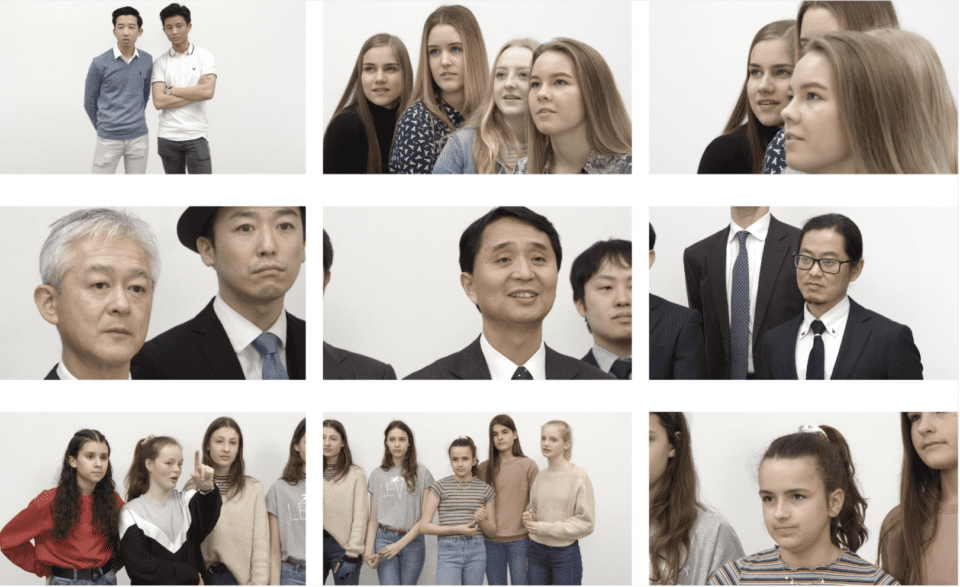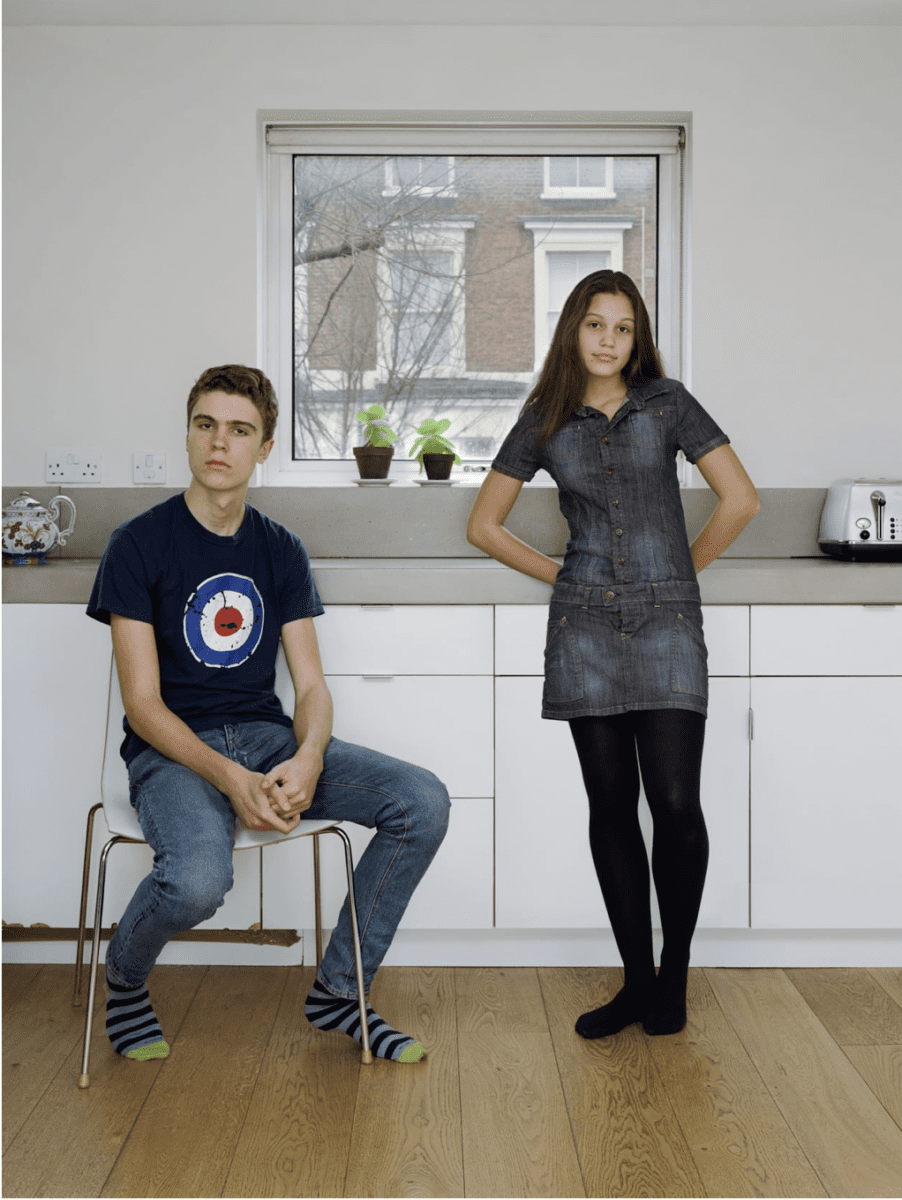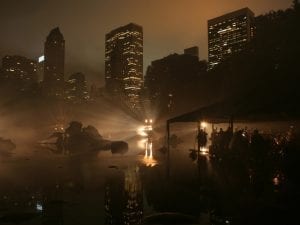Rineke Dijkstra’s 2019 film, Night Watching, depicts groups of people standing before Rembrandt’s The Night Watch (1642), discussing it amongst themselves. The painting remains unseen – out of frame. The people in the film look out at us and we, the viewers, watch their discussions. It’s as if we’re hidden within the painting. At one point, a slick businessman breaks off from his peersand says: “I wouldn’t mind being in a painting and being seen by people 300 years later.” But – we are compelled to ask – would he feel the same way about being watched?
The difference between being “seen” and being “watched” is important to Dijkstra’s work, which uses photography and film to explore physical and emotional changes in human beings over time. This also extends to the presence of frames, spectators and voyeurs, and how these might also affect our development. This difference is emphasised explicitly in Night Watching, a video installation at Marian Goodman gallery, London, as well as in two “transitional” photographic series.

One of these photographic series focuses on the actor Georgie Henley, who is internationally recognised for appearing, from the age of 10 onwards, in the early-2000s adaptations of C.S. Lewis’ Chronicles of Narnia. In Dijkstra’s photos, she is depicted at two different stages of a life which has been defined by being watched on-screen. Another series of images charts the development of three sisters over six years, growing up alongside each other but separated into individual frames –“becoming” themselves through relations and oppositions.
Just as a viewer “watches” a film, in these chronological series, we watch the sitters grow and change instantaneously. It might seem strange to suggest, that we might “watch” a single, stationary image, but the acts of “seeing” and “watching” become further complicated by the exhibition – as still frames encourage the eye to fill in the gaps, and “watch” children grow up.
In the Family Portraits (2012-ongoing) and Parkphotographs (1998/2005), children and teenagers are depicted, either in their homes or in public landscapes. They look as though they’ve been asked to “act natural” and are discovering that this is a paradox. The younger sitters respond to the distinction between “the world” and “the self” with confidence. They pose and perform. For the adolescents, it’s evident that having their photo taken is a kind of wincing emergency. A viewer might be reminded of the shared root of the words “emergency” and “emergence” whilst watching these pubescent human beings arrive, startled, into their own physical form.
Unlike in conventional portraits, the sitters are not at rest. They’re poised between two different physical states – youth and adulthood – and often uncomfortably positioned between two poses, caught in the moment of rearranging themselves, not quite sitting or standing, neither one thing nor the other. This communicates the strangeness of their (our) human state – forever “becoming.”

The institution of portrait photography is fraught with power structures – the gaze of the viewer and the objectified model. This dynamic is all too often hyper-sexualised, exploitative, or corporate. Dijkstra disassembles the objectifying eye by emphasising a continuous process of “watching”, rather than presenting a finished product to be scrutisinied. However, in each of the images on display at Marian Goodman, the awkward, burgeoning self-awareness of the sitters is still ever-present. There is a sense of the performed, psychosexual friction in the growth of a human being – which a good portrait shouldn’t miss.
Indeed, Dijkstra allows her eye to be guided by instinctive impulses – the impulse to look at beautiful people, for example – but complicates these in an instant. To this end, there’s usually some second frame within the frame: a window, the arms of a couch, the right-angle of a child’s scooter. The sitters arrange themselves in space, intersecting with many rigid lines. Each angle of incidence between body and object is exactly this – an ‘incident’ – and we watch them unfold. This gives the photos their arresting power.
Though Rembrandt’s The Night Watch(1642) is referenced in the exhibition, the incisive activity of the photographs might recall an earlier Rembrandt – The Anatomy Lesson of Doctor Nicolaes Tulp(1632). This painting is, in fact, briefly referenced in Dijkstra’s film by one of the businessmen, who looks directly towards us and makes a slicing gesture with his hands, mimicking Rembrandt’s doctor cutting into the cadaver. Again, the film makes explicit : a good portrait doesn’t just look back at you, it gets right under your skin. Mutual watching is a meeting of realities, and each one comes away changed.
Words: Adam Heardman
Rineke Dijkstra ran 12 March – 25 July at Marian Goodman Gallery. For more information, click here.
Credits:
1. Rineke Dijkstra, Marianna and Sasha, Kingisepp, Russia, November 2, 2014.
2. Installation view, Rineke Dijkstra, 12 MARCH – 25 JULY 2020, Marian Goodman Gallery, London.
3. Rineke Dijkstra, Georgie Henley, London, UK, October 9, 2010, 2010.
4. Rineke Dijkstra, Georgie Henley, London, UK, March 29, 2016, 2016
5. Rineke Dijkstra,Night Watching, 2019
6. Rineke Dijkstra, Alessandro and Sofia, London, February 9, 2020, 2020.
7. Rineke Dijkstra, Arden and Miran, London, February 16, 2020 , 2020









